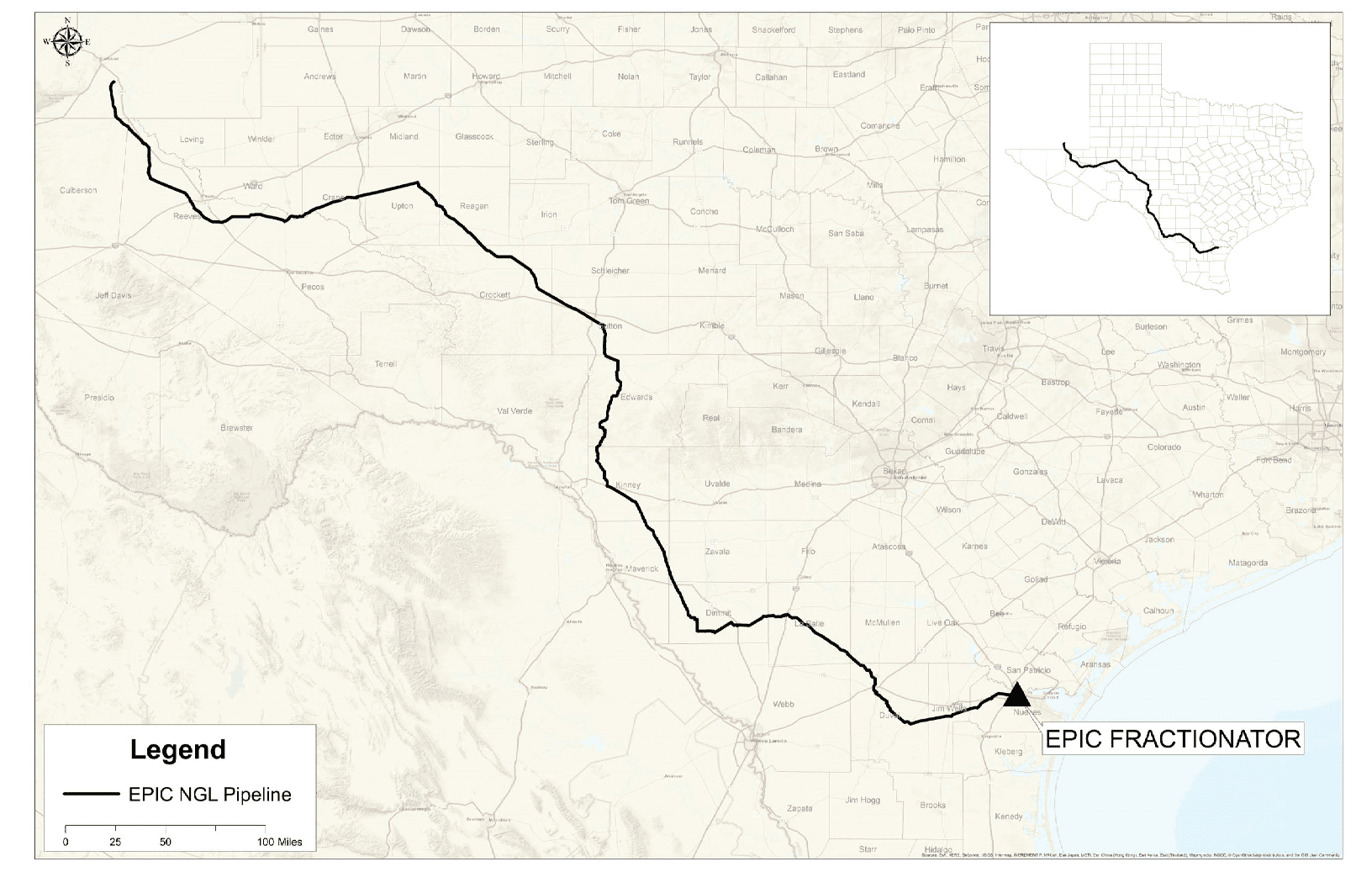SAN ANTONIO, TX — EPIC Midstream Holdings, LP (“EPIC”) announced the completion of Phase Two of the EPIC Natural Gas Liquids (“NGL”) Pipeline. NGL product is now running from DLK Black River Midstream to Benedum, Texas. 205 miles of the total 700 mile pipeline project are now in service.
Today’s completion comes less than three months after EPIC completed construction of Phase One. Work continues on Phase Three which will run from Benedum to Corpus Christi, Texas. The NGL pipeline is now connected to five processing complexes that have a capacity of one billion cubic feet (BCF). When complete, the EPIC NGL pipeline will have a throughput capacity of over 440,000 barrels per day with multiple origin points in the Delaware and Midland Basins.
EPIC began construction of the NGL pipeline in December of 2017 after signing a definitive agreement with BP Energy Company to anchor the 700-mile NGL pipeline to link producers’ NGL reserves in the Permian and Eagle Ford Basins to Gulf Coast refiners, petrochemical companies and export markets.
Also announced today, Houston-based Optimized Process Designs, LLC (“OPD”) has been contracted to provide EPC (engineering, procurement, and construction) services for EPIC’s first 100,000 barrel per day fractionation train.
The EPIC NGL Pipeline is backed by capital commitments from funds managed by the Private Equity Group of Ares Management, L.P. (NYSE: ARES) and will run side by side with the EPIC Crude Oil Pipeline.
ABOUT EPIC
EPIC was formed in 2017 to build, own, and operate midstream infrastructure in both the Permian and Eagle Ford Basins. EPIC’s first two projects, the EPIC Crude Oil Pipeline and the EPIC NGL Pipeline, will transport crude and NGL across Texas for delivery into the Corpus Christi market. For more information, visit www.epicmid.com






